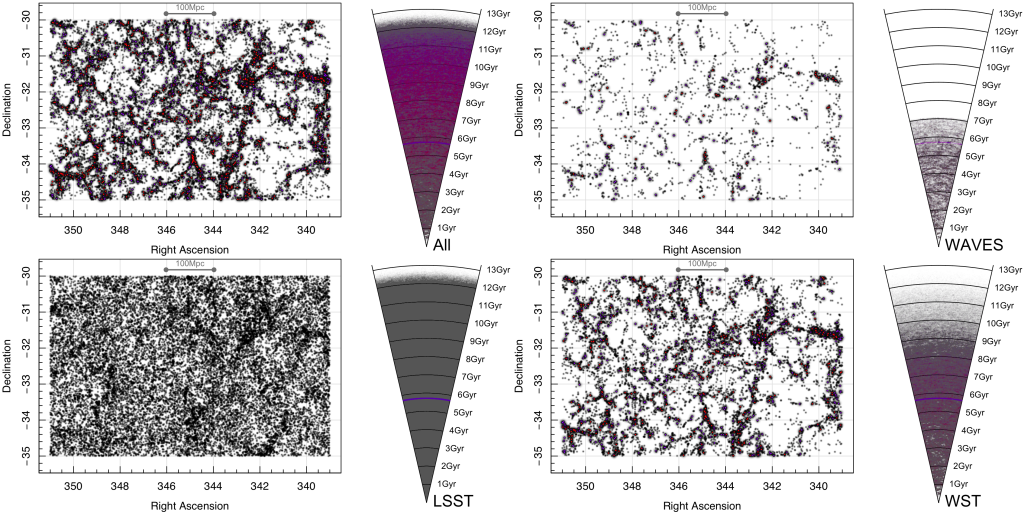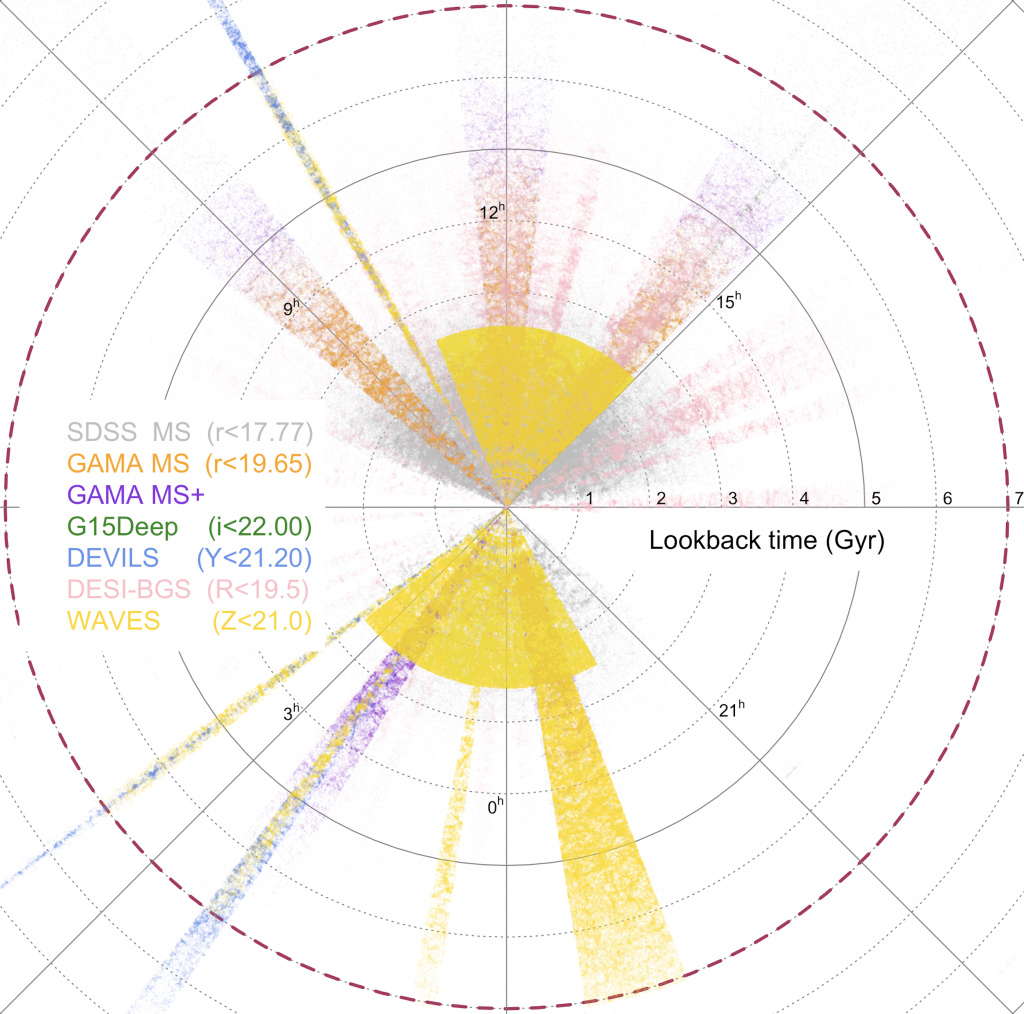WAVES is a massively multiplexed spectroscopic survey of 1.7 million galaxies planned to be carried out on the VISTA telescope as part of the 4MOST Consortium’s suite of surveys.
WAVES is a densely packed spectroscopic survey intended to study the underlying structure of the Universe. We plan to reveal the dark matter distribution and its recent evolution by finding and weighing the galaxy groups within our survey regions. We will use the locations and masses of the groups, pairs and galaxies to reconstruct a direct map of the underlying dark matter distribution that underpins our Universe. Further goals are to explore the dwarf galaxy regime in the local Universe, to search for the missing baryons, and to study how galaxy properties and evolution are accelerated or retarded by the haloes in which they reside.
WAVES is one of 10 consortium and 8 community surveys that will be conducted in parallel on the newly revamped VISTA telescope at the European Southern Observatory’s Paranal site in Chile. The telescope itself will be renamed 4MOST as it switches from a dedicated near-infrared imaging facility (VISTA) to a dedicated multi-object spectroscopic facility (4MOST).
WAVES will use approximately a third of the dark and grey time on this facility over its first 5 years of operations to measure the distances to around 1.7 million galaxies. While not the largest survey by number, WAVES will be unique in its ability to discern the fine structure of the Universe (filaments, tendrils and voids) and its constituents (clusters, groups and galaxies) – well until WST comes along.

While the study of dark matter, galaxy groups, galaxy populations and galaxy evolution represent our headline goals, a secondary factor is to support and complement multiple surveys being conducted by imaging facilities on the ground (LSST, ASKAP, MeerKAT, MWA, SKA) and space (Herschel, eROSITA, Euclid, Roman).
WAVES has recently been extended to now include three community surveys: ORCHIDSS will focus on follow-up of radio continuum and HI selected targets from the deep MeerKAT surveys. StePS will obtain high-S/N galaxy spectra to study the evolution of stellar populations and outflows to z=0.8. 4C3R2 will target under-dense regions defined by Self-Organised (colour) Maps to improve photometric-redshift estimations for weak lensing studies.
